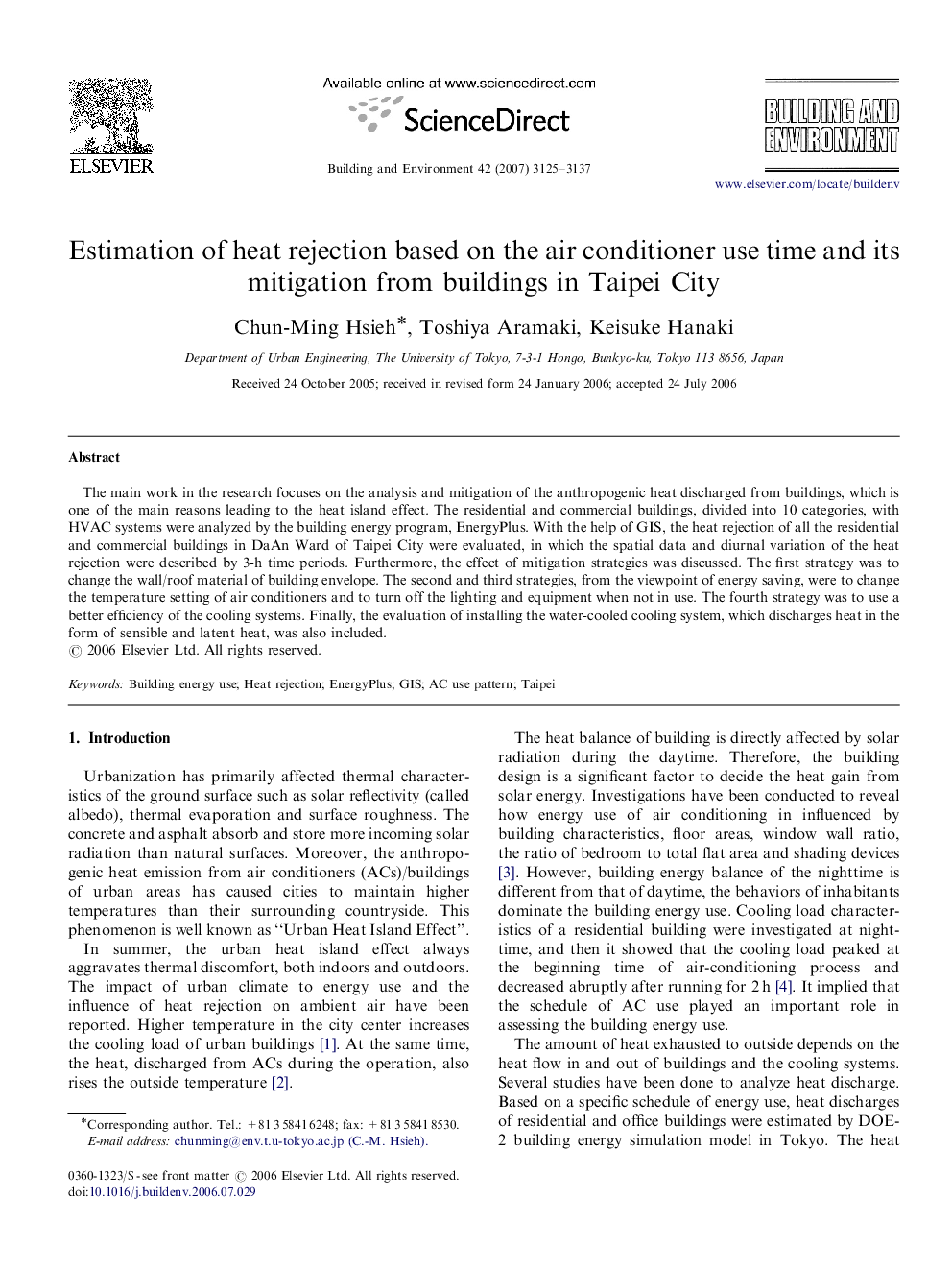| Article ID | Journal | Published Year | Pages | File Type |
|---|---|---|---|---|
| 249975 | Building and Environment | 2007 | 13 Pages |
The main work in the research focuses on the analysis and mitigation of the anthropogenic heat discharged from buildings, which is one of the main reasons leading to the heat island effect. The residential and commercial buildings, divided into 10 categories, with HVAC systems were analyzed by the building energy program, EnergyPlus. With the help of GIS, the heat rejection of all the residential and commercial buildings in DaAn Ward of Taipei City were evaluated, in which the spatial data and diurnal variation of the heat rejection were described by 3-h time periods. Furthermore, the effect of mitigation strategies was discussed. The first strategy was to change the wall/roof material of building envelope. The second and third strategies, from the viewpoint of energy saving, were to change the temperature setting of air conditioners and to turn off the lighting and equipment when not in use. The fourth strategy was to use a better efficiency of the cooling systems. Finally, the evaluation of installing the water-cooled cooling system, which discharges heat in the form of sensible and latent heat, was also included.
